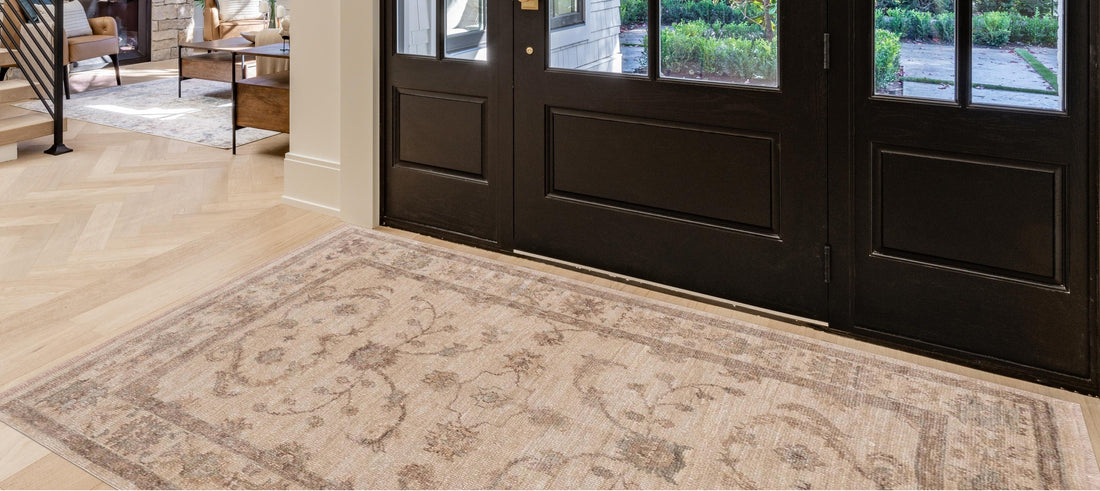
Angora Wool Rug vs. Wool Rug
Share
While both Angora wool (also known as Mohair) and traditional sheep's wool are natural fibers, there are several key differences that set them apart, mainly when used in rugs. Angora wool is renowned for its silky, smooth texture and lustrous sheen, which gives rugs an elegant, almost radiant appearance. This natural glow adds a layer of sophistication and richness which is hard to replicate with other materials. In contrast, sheep's wool tends to be denser, more matte, and slightly rougher to the touch, which resulting in a cozier look and feel.
Another crucial difference is durability. Angora wool fibers are exceptionally strong and elastic, so they can endure significant foot traffic without losing their structure or sheen. Mohair fibers naturally resist crushing and are less likely to shed or fuzz over time. While traditional wool rugs are also known for being sturdy and long-lasting, they are more likely to pill, feel, or show wear in high-use areas. On the other hand, Angora wool rugs maintain their elegant appearance with minimal maintenance. That makes them an excellent choice for visual appeal and performance for the interiors.
Texture and comfort might vary as well. Angora wool is incredibly smooth and soft, often described as luxurious underfoot. Sheep's wool offers warmth and plushness but may not feel as sleek or refined. For those sensitive to texture or seeking a more polished aesthetic, Angora wool provides a higher-end tactile experience.

Regarding color and dye absorption, Angora wool holds color exceptionally well and tends to reflect light, giving dyed rugs a vibrant, shimmering finish. Traditional wool absorbs dye beautifully, but the resulting tones are usually deeper and more muted. If you aim for rich jewel tones or a subtle glow, Mohair rugs have a distinct visual advantage.
When comparing costs, Angora wool rugs are usually priced higher due to the rarity of the fiber, the seasonal harvesting process, and the meticulous craftsmanship involved in weaving. Angora goats produce less fiber than sheep; their wool requires careful handling to preserve its quality. This exclusivity and artisanal production methods contribute to the elevated price tag. On the other hand, wool rugs are more accessible, with a wider variety of styles and price points suitable for various budgets.
Choosing between an Angora wool rug and a traditional one depends on your priorities. If you're seeking timeless luxury, exceptional softness, and a visually striking centerpiece, an Angora wool rug is a worthwhile investment. If you value comfort, durability, and versatility at a more accessible price, a high-quality wool rug remains a classic and dependable choice.
